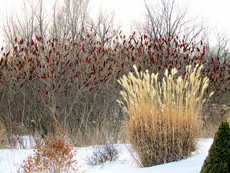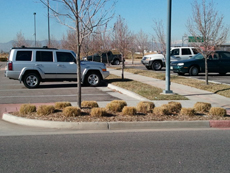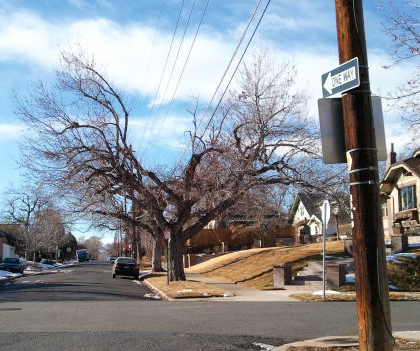The 7 Principles of Xeriscape, Revisited 30 Years Later
By now most people in the western U.S. are familiar enough with Xeriscape to know that there is indeed no “zero” in the pronunciation (it’s pronounced more like zeer-escape). The term 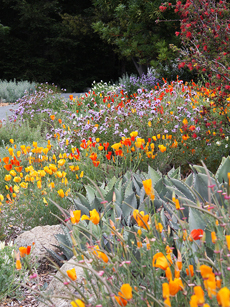 was coined by the Denver Water Department in 1981, are derived from the Greek word “xeros”, meaning dry.
was coined by the Denver Water Department in 1981, are derived from the Greek word “xeros”, meaning dry.
There are 7 principles that make up the concept of Xeriscape: planning and design, improving the soil, creating practical turf areas, irrigating efficiently, proper plant selection, using mulch, and maintaining the landscape.
While I am not sure EXACTLY when the 7 principles were first released (my guess is a few years after the term Xeriscape was first used), I have often wondered whether an update was needed, or if the same 7 principles would be adopted exactly the same today.
While today Xeriscape remains as relevant as ever, there are some important observations I have made through experience regarding the 7 principles, common misconceptions about them, and how they relate to landscaping in today’s rapidly changing world. Therefore, I thought it might be helpful to revisit and add updates to the original 7 principles:
Principle #1: Planning & Design
Updates: Planning and design is as important today as ever. Landscapes continue to get more complex as dozens of new plant choices are introduced each year, along with advances in irrigation systems and controllers. The more complex a project gets, the more benefit is gained from careful planning and design.
Another important development has been the landscape architecture license act of 2007, when Colorado joined the rest of the country in requiring that landscape architects be licensed, and that all commercial and large residential projects (greater than 4 units) have landscape plans that have been prepared by a licensed landscape architect. While this may have raised the cost of design somewhat, a good efficient design will always pay for itself by minimizing surprises during construction, allowing plans to be competitively bid, and lowering maintenance costs over time.
Misconceptions: Xeriscape can only be done in one style. A design will make the project cost more.
Principle #2: Soil Improvements
Updates: This is one area that needs to be looked at closer. The intention of this principle should be to “analyze and improve soil when needed, depending on what plantings are proposed”. The problem has been that many cities and municipalities started to require that all landscaped areas have large amounts of amendment incorporated into the soil over the entire landscaped area, and even requiring dump tickets from the contractors to prove that the amendments were placed.
While this is a good idea for bluegrass and for some types of plants, there are many other plants were the amendment is detrimental to plant health. Many of the very xeric and native plants prefer the native, rockier soil, and can suffer from root rot if soil is heavily amended with organics. I personally think that the amendment should only be tilled into new bluegrass areas, and in the individual planting backfill of those plants that will benefit from it.
Misconceptions: All plants require soil improvements.
Principle #3: Practical Turf Areas
Updates: I am not sure whether the original principle read “Practical Turf Areas” or “Practical Bluegrass Sod Areas”. One of the trends I am seeing that we are starting to use in our designs is the creation of “turf” areas from groundcovers and/or spreading perennials and shrubs. The questions that one needs to ask is not only where will the lawn areas be, but does an area really need to be a “lawn” at all?
Many of the bluegrass turf alternatives are very difficult and sometimes expensive to get established. If an area of the landscape will not be used for games and high foot traffic, then why substitute a hard-to-grow lawn alternative for bluegrass when there are many good spreading plants that are easy to grow? In other words, if a “turf” area will not be used, it simply becomes a low growing visual element, in which case many planting alternatives should be explored.
Misconceptions: Xeriscape means no grass, and bluegrass turf cannot be used in a Xeriscape.
Principle #4: Efficient Irrigation
Updates: Many advancements in irrigation have been made in the past several years, making it possible to irrigate even more efficiently. However, many of these benefits have been over-hyped. While I am all for making our irrigation systems more efficient, this approach does not address the underlying issue- how much water does my landscape REQUIRE to remain healthy? Only by installing water efficient landscapes will any major impact be made.
Misconceptions: If one installs new irrigation heads and a smart controller, the amount of water they will need to use will go down significantly.
Principle #5: Proper Plant Selection
Updates: This principle goes hand-in-hand with a good design. One of the overlooked aspects of this principle is a phenomenon known as “micro-climates”. Microclimates are small climate differences that occur in the landscape due to sun vs. shade relationships, water availability and retention, wind, soil differences, etc. Every day in this business I am reminded how plant selection is impacted by these micro-climates.
One area of debate is the natives vs. non-natives argument. I am firmly in the non-natives camp. There are some amazing native plants that I love to use, but there are also many non-natives discovered every year that meet the needs of our varying miro-climates.
Misconceptions: Only native plants are appropriate to use.
Principle #6: Mulching
Updates: The biggest problem I see with this principle is that all mulches are not created equal. There are cost, aesthetic, and weight differences between wood mulch and rock mulch. Not all plants like being heavily mulched, and some prefer rock mulch over wood mulch, for many of the same reasons some plants do not like a lot of soil amendment. As a result, wood mulch seems to be getting a bad name for Xeriscapes. I have even seen some cities write into code that wood mulch cannot be used for a low water-use zone. But wood is often quite a bit less expensive than rock mulch, and is WAY easier to move around, plant in, and make adjustment to than rock.
The bottom line on mulching- there are different rules to follow based on the type of mulch you are using. If you use wood mulch, use a thin layer and be sure not to over-water. If you use rock, remember that it will be difficult to add plants later or make changes to rocked areas. Also, keep in mid the aesthetics- I feel that too much rock can make a landscape seem a little too harsh, and but having a combination of mulch types can help to visually break up large areas.
Misconceptions: All mulch is the same, all plants love being mulched.
Principle #7: Maintenance
Updates: This is the most undervalued principle. For every 10 beautiful landscapes that I have designed and enjoy visiting time and again, there is at least one commercial landscape where even the most basic maintenance has been neglected. Shrubs have been sheared off into little balls right before they were about to flower, weeds have overtaken a bed area, plants have been over-watered to death.
The biggest piece of advice I can give to property owners or managers is this: walk your landscape once in a while, and make maintenance adjustments based on what you see. Remember that plants are living things, and your job is to understand what will allow each plant to flourish naturally, with the least amount of interference (such as over-watering, over-pruning, etc.) while at the same time minimizing negative factors such as pests, weeds, etc.
Misconceptions: All plants like more water, all shrubs need to be pruned, all plants have similar needs.
This is the official blog of Outdoor Design Group, Colorado Landscape Architects. For more information about our business and our services, click here.
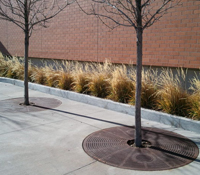 Ornamental grasses can also add beauty to the winter landscape.
Ornamental grasses can also add beauty to the winter landscape.